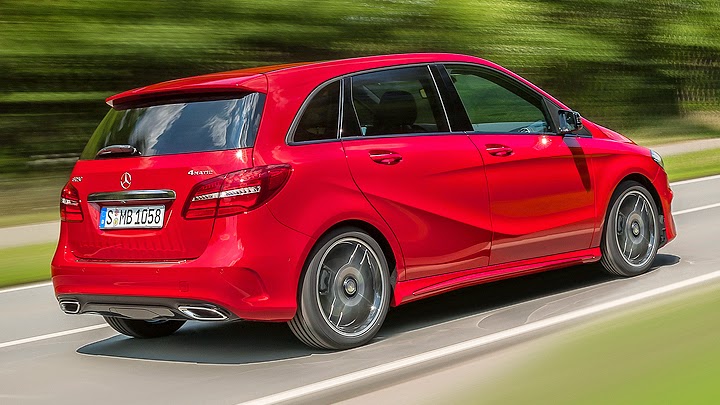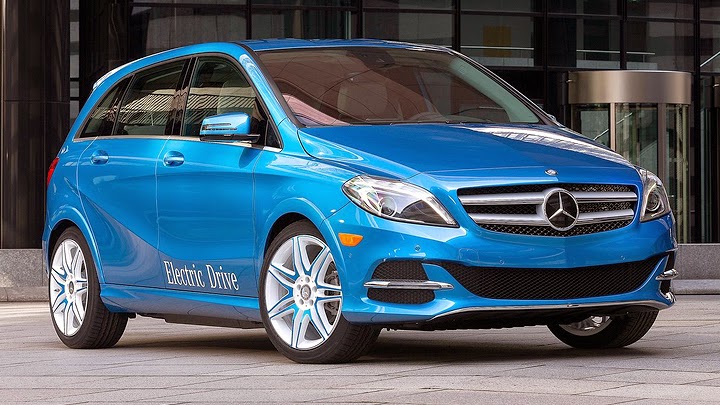
Part of B-Class’ success comes from dissimulating itself, as ironic as it may be. After all, most minivans have set as target the North-American family stereotype, whose characteristics include living in suburbs (and therefore going to most places by car), taking the parents to work, children to school and both to other activities, and dealing with the mess of leaving toys and snack wrappers in the car. But the truth is this is followed mostly in that region. Families from other countries can vary in many aspects, such as living in big cities, using public transportation for part of the chores, having different family structures and living in different standards. Consequently, whoever makes an effort to satisfy these other preferences is set to a solid chance of worldwide success.
Mercedes’ first decision towards that was restricting B-Class to five seats. It enabled the company to create a much more casual design, which even accepts some sportiness hints. This is interesting because not only can it suit small families, as it also seduces wealthier friend groups. The ‘2015 facelift invests in this trait by adopting the company’s current design language, through new headlights (with a daytime LED strip) and retouched front grille, bumpers and tail lights. There are also new wheels and additional chrome inserts. Besides, the AMG Line kit was already showed, and it takes a lot of inspiration from the minivan’s also best-seller siblings A-Class and CLA. Alternative-propulsion variations, Natural Gas Drive and Electric Drive, remained visually untouched.










Entering the car reveals some new equipments, such as the Keyless-Go starting function, a refreshed design for the instrument cluster, and an ambient-lighting system with twelve colors, “allowing different moods to be created”. The infotainment system was also updated, starting by the 8” display: several connectivity functions were added, which includes accident recovery, Remote Online (the owner can use a website to connect with the car and find data like battery and fuel levels) and COMAND Online (real-time traffic information). Besides, the trim levels can receive new equipment packages: Style, Urban, AMG Line, Night, Exclusive and AMG Exclusive compose six different ways of improving the basic car, whether in visual, comfort, luxury or technology.
As far as powertrain is concerned, there are no surprises. Using gasoline, B-Class offers a 1.6L engine good for 122 or 156 hp. The diesel range includes a 105-hp 1.5L from Renault and a 2.1L with either 136 or 177 hp (as well as the 4Matic system as an option). But if you prefer alternative fuels, Natural Gas Drive and Electric Drive use B-Class’ Energy Space modular concept: the first one uses a 14-liter tank for gasoline and other three for gas (one bigger and the others smaller), while the other features a lithium-ion battery. According to the company, “due to this intelligent packaging method, the five-seater model has been able to retain the generously proportioned luggage compartment for which it is known”.
Lançamento no Brasil (06/04/2015)
Alguns meses depois do lançamento na Europa, o facelift da minivan alemã acaba de chegar ao Brasil. O Classe B ganhou estilo renovado por dentro e por fora (a empresa afirma um coeficiente de arrasto de apenas 0,28), e uma lista de equipamentos que contempla tela de 7”, quadro de instrumentos com nova grafia, e uma série de sistemas eletrônicos de segurança tanto ativa como passiva. Sob o capô, outra vez só se tem ao 1.6 turbo, que gera potência de 156 cv e torque de 25,5 kgfm, e ao câmbio automático 7G DCT, com sete marchas, e borboletas atrás do volante. Os dados oficiais afirmam aceleração de 0 a 100 km/h em 8,4 segundos e velocidade máxima de 220 km/h. O modelo custa R$ 128.900 e já se encontra à venda no país.